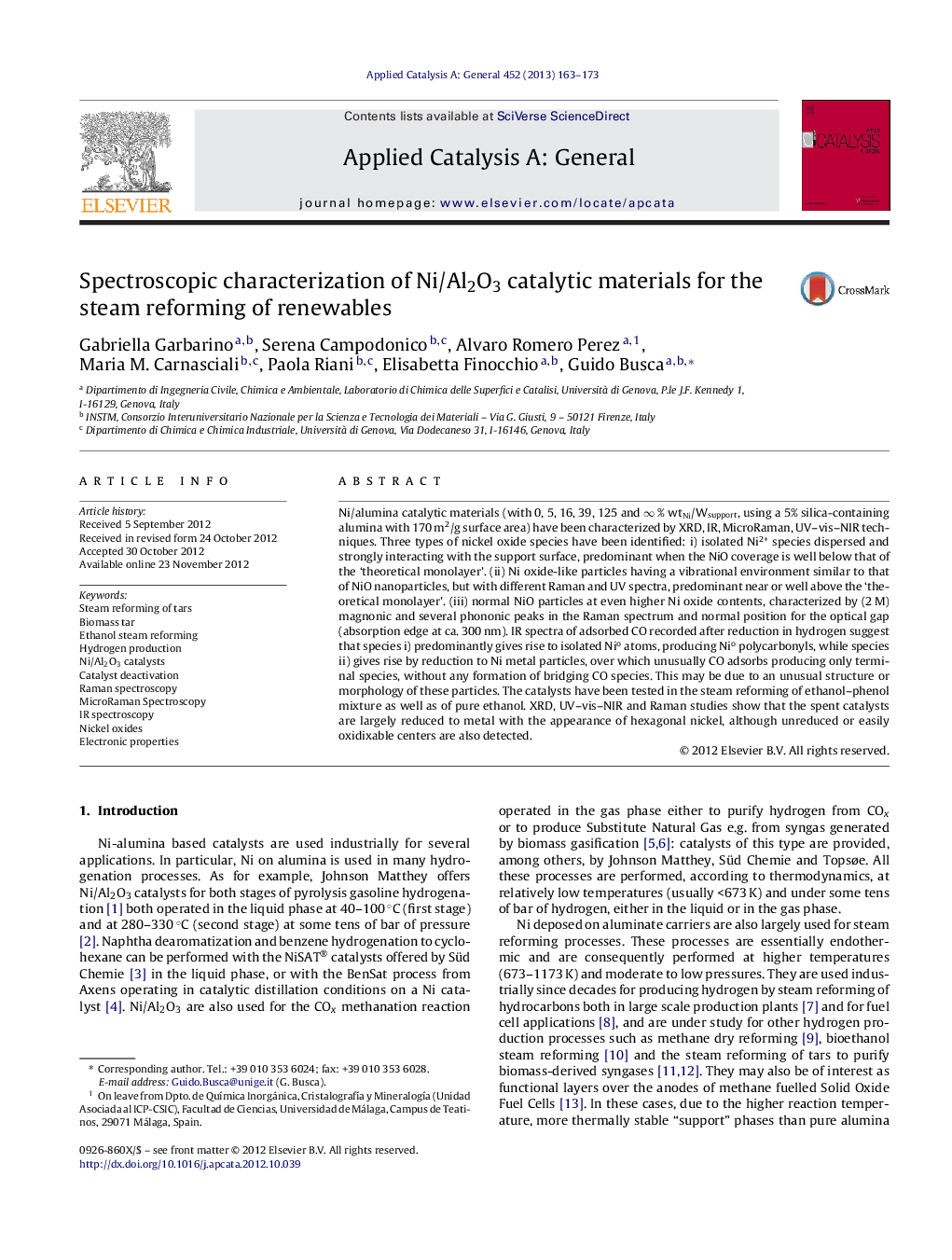| Article ID | Journal | Published Year | Pages | File Type |
|---|---|---|---|---|
| 40505 | Applied Catalysis A: General | 2013 | 11 Pages |
Ni/alumina catalytic materials (with 0, 5, 16, 39, 125 and ∞ % wtNi/Wsupport, using a 5% silica-containing alumina with 170 m2/g surface area) have been characterized by XRD, IR, MicroRaman, UV–vis–NIR techniques. Three types of nickel oxide species have been identified: i) isolated Ni2+ species dispersed and strongly interacting with the support surface, predominant when the NiO coverage is well below that of the ‘theoretical monolayer’. (ii) Ni oxide-like particles having a vibrational environment similar to that of NiO nanoparticles, but with different Raman and UV spectra, predominant near or well above the ‘theoretical monolayer’. (iii) normal NiO particles at even higher Ni oxide contents, characterized by (2 M) magnonic and several phononic peaks in the Raman spectrum and normal position for the optical gap (absorption edge at ca. 300 nm). IR spectra of adsorbed CO recorded after reduction in hydrogen suggest that species i) predominantly gives rise to isolated Nio atoms, producing Nio polycarbonyls, while species ii) gives rise by reduction to Ni metal particles, over which unusually CO adsorbs producing only terminal species, without any formation of bridging CO species. This may be due to an unusual structure or morphology of these particles. The catalysts have been tested in the steam reforming of ethanol–phenol mixture as well as of pure ethanol. XRD, UV–vis–NIR and Raman studies show that the spent catalysts are largely reduced to metal with the appearance of hexagonal nickel, although unreduced or easily oxidixable centers are also detected.
Graphical abstractFigure optionsDownload full-size imageDownload high-quality image (43 K)Download as PowerPoint slideHighlights► Ni/Al2O3 catalysts active in steam reforming of renewables have been characterized. ► XRD, skeletal IR and Raman, IR of adsorbed CO, UV–vis–NIR techniques have been used. ► Isolated Ni2+, NiO nanoparticles and normal NiO particles predominate at different loadings. ► Hexagonal Ni metal is found on spent catalyst together with easily oxidizable species.
